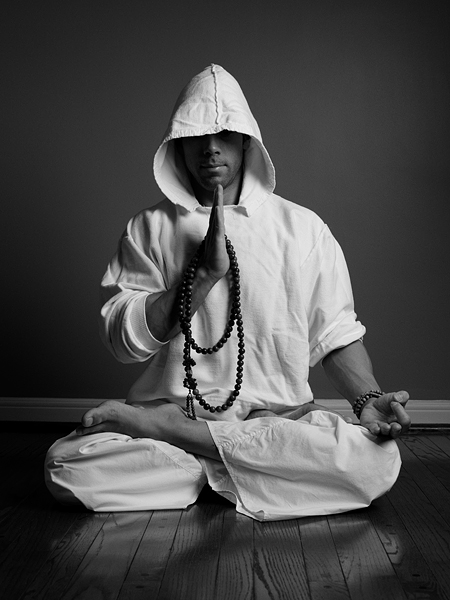Meditation, Chi Kung and Yoga are best learned from a teacher in a class situation, but videos or books can help. All are relatively inexpensive, and once you learn proper techniques, ten square feet of quiet space is all you need to practice at home, in a park, or even on the beach.
The benefits of taking a class are that the instructor can correct your form and keep you from picking up bad habits, and you’ll meet other students with who, you can practice between classes and share similar interest.
Posture: Sit in a cross legged position that is comfortable. You can sit on a chair, in Half Lotus or Full Lotus (like in figure 1.1). Press your sitting bones into the ground as you extend up through the spine. Lift the crown of your head up to the sky. Place one hand on top of the other and have the thumbs lightly touch. Gently close your eyes.
Breath: Visualize the numbers as you count throughout the set. This will help develop what is called “one point concentration.” Your breathing must be so fine that it does not ruffle a feather. Each count should be 1 second long. Inhale for count of 4 and feel your lower abdomen expand as you push it out. Hold and retain the air in your lungs for the count of 16. Exhale for a count of 8 as you squeeze the belly button back to the spine.
After ten breath cycles are performed the exercise is finished. In an authentic yoga practice, the ego may not be permitted to intrude into the process. Don’t “perform” the exercises as if you had an appreciative audience. This is your journey. Explore and express yourself while you gain the wonderful physical and mental benefits. This breathing technique is called Abdominal Breathing and should be maintained during the entire yoga practice.
Benefits: Calms the brain, Stretches the ankles and knees, and stimulates the pelvis, spine, abdomen, and bladder.
Hope you enjoyed this Zen Meditation instruction article, namaste!



